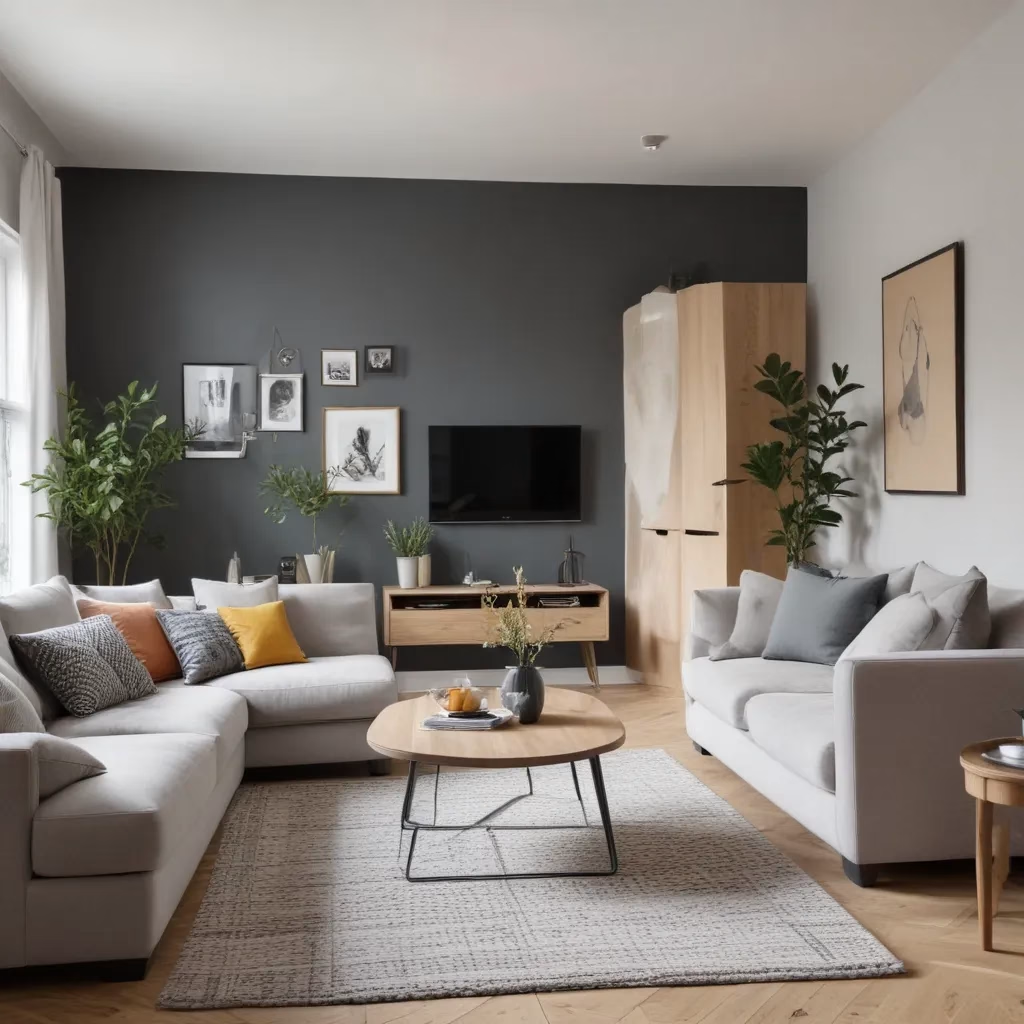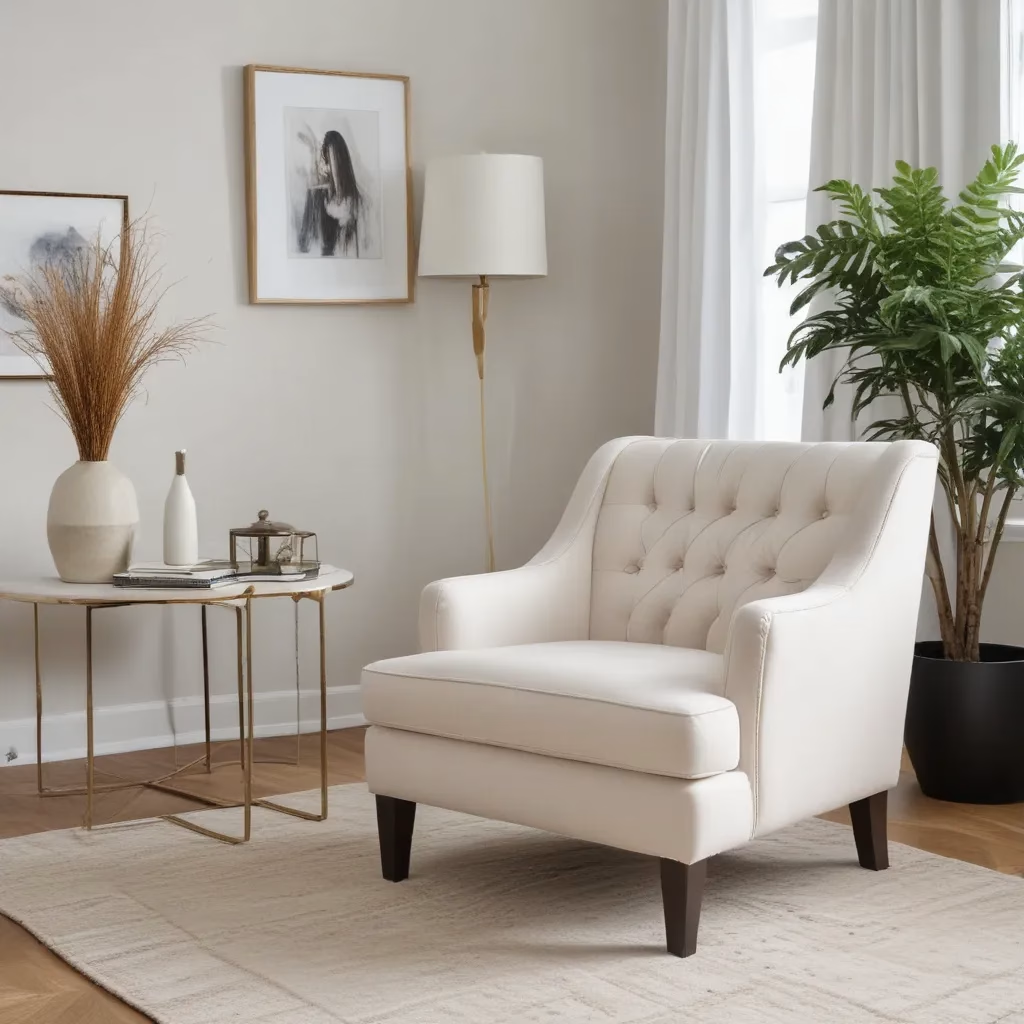
Understanding the Art of Sofa Selection
Choosing the right sofa is a crucial decision for any home. It’s not just about finding a place to sit; it’s about creating a centrepiece for your living space that balances comfort, style, and functionality. As we look towards the trends of 2024, the UK furniture market is evolving to meet the changing needs and preferences of homeowners.
When selecting a sofa, consider how it will fit into your daily life. Will it be the main seating area for family gatherings? A quiet spot for reading? Or perhaps the focal point for entertaining guests? Your lifestyle should inform your choice, guiding you towards a sofa that not only looks good but also serves its purpose effectively.
The size of your room plays a significant role in sofa selection. A large sectional might be perfect for a spacious living room, while a compact two-seater could be ideal for a cosy flat. Always measure your space carefully, accounting for doorways and other furniture. Remember to leave enough room for movement around the sofa to maintain a comfortable flow in the room.
Current Sofa Trends in the UK
As we move into 2024, several sofa trends are gaining popularity in the UK:
-
Modular Designs: Flexibility is key, with modular sofas allowing homeowners to reconfigure their seating arrangements to suit different occasions.
-
Sustainable Materials: Eco-conscious consumers are driving demand for sofas made from recycled fabrics and sustainably sourced wood.
-
Bold Colours: While neutrals remain popular, there’s a growing trend towards sofas in rich, bold hues that make a statement.
-
Multifunctional Pieces: Sofas with built-in storage or that convert into beds are increasingly sought after, especially in urban areas where space is at a premium.
-
Curved Shapes: Moving away from traditional rectangular shapes, curved and organic forms are becoming more prevalent, adding a softer touch to living spaces.
These trends reflect a broader shift towards personalisation and adaptability in home furnishings. UK consumers are looking for sofas that not only provide comfort but also express their individual style and meet the practical demands of modern living.
Choosing the Right Material for Your Sofa
The material of your sofa affects not only its appearance but also its durability, maintenance requirements, and comfort level. Here’s a comparison of popular sofa materials:
| Material | Durability | Maintenance | Comfort | Best For |
|---|---|---|---|---|
| Leather | High | Easy | Good | Formal settings, homes without pets |
| Cotton | Medium | Moderate | High | Casual environments, families |
| Linen | Medium | Moderate | High | Light use, adult households |
| Velvet | Medium | High | Very High | Luxury settings, careful users |
| Microfibre | High | Easy | High | High-traffic areas, homes with children or pets |
When selecting a material, consider your household’s needs. If you have children or pets, a durable, easy-to-clean fabric like microfibre might be ideal. For a more formal living room, leather can provide a sophisticated look that ages well with proper care.
Remember that the colour and texture of the material can significantly impact the overall feel of your room. Light colours can make a space feel larger, while darker hues can create a cosy atmosphere. Textured fabrics add visual interest and can help hide minor wear and tear.
The Importance of Frame and Construction
While the outward appearance of a sofa is important, what’s inside matters just as much. The frame and construction of a sofa determine its longevity and comfort over time. Here are key points to consider:
-
Frame Material: Hardwood frames, particularly those made from oak, ash, or beech, offer the best durability. Avoid sofas with frames made from pine or composite woods, as these can warp or break over time.
-
Joinery: Look for sofas with joints that are screwed, glued, and corner-blocked for additional strength. Avoid those held together solely with staples or nails.
-
Springs: Eight-way hand-tied springs are traditionally considered the best, offering even support and comfort. However, high-quality serpentine springs can also provide excellent support at a lower cost.
-
Cushion Filling: The filling affects both comfort and maintenance. High-resilience foam wrapped in down or polyester fibre offers a good balance of comfort and durability. Memory foam is another option, providing excellent support but potentially retaining heat.
Investing in a well-constructed sofa may cost more initially, but it will pay off in the long run with better comfort and longevity. A quality sofa can last 10-15 years or more with proper care, making it a worthwhile investment in your home.
Maximising Comfort with the Right Design
The design of your sofa plays a crucial role in its comfort level. Here are some design elements to consider:
-
Seat Depth: A deeper seat allows for more relaxed lounging, while a shallower seat provides better back support for sitting upright.
-
Back Height: Higher backs offer more support, which is ideal for taller individuals or those who prefer a more formal sitting position.
-
Arm Style: Wide, padded arms can provide additional comfort for lounging, while narrow arms maximise seating space.
-
Cushion Firmness: Softer cushions offer immediate comfort but may lose shape over time. Firmer cushions provide better support and often maintain their shape longer.
When testing sofas, sit on them as you would at home. If you often lie down to watch television, try that position in the store. Spend at least 5-10 minutes sitting on each sofa to get a true sense of its comfort level.
Integrating Your Sofa into Your Home’s Design
Your sofa should complement your overall interior design. Here are some tips for seamless integration:
-
Consider Your Existing Decor: Choose a sofa that fits with your current colour scheme and style. If you’re planning a complete room makeover, select the sofa first and build the room around it.
-
Balance Scale: Ensure your sofa is proportionate to your room and other furniture. A large sofa can overwhelm a small space, while a small sofa may look out of place in a spacious room.
-
Create Focal Points: Use your sofa to create a focal point in the room. Position it to face a fireplace, window with a view, or a media centre.
-
Accessorise Wisely: Enhance your sofa with throw pillows and blankets that complement its colour and style. This allows you to update the look seasonally without replacing the entire piece.
-
Consider Traffic Flow: Arrange your sofa to allow easy movement around the room. Avoid blocking natural pathways or creating obstacles.
Remember, your sofa is a long-term investment. Choose a style that you’ll be happy with for years to come, rather than following short-lived trends.
Maintaining Your Sofa for Longevity
Proper maintenance can significantly extend the life of your sofa. Here are some care tips:
-
Regular Cleaning: Vacuum your sofa weekly to remove dust and debris. For fabric sofas, use the upholstery attachment to avoid damaging the material.
-
Immediate Stain Treatment: Address spills immediately to prevent staining. Blot (don’t rub) with a clean, white cloth.
-
Professional Cleaning: Have your sofa professionally cleaned every 12-18 months, or more frequently for high-traffic homes.
-
Rotation: Rotate cushions regularly to ensure even wear. This is especially important for sofas that get daily use.
-
Protect from Sunlight: Direct sunlight can fade fabric and leather. Use window treatments to protect your sofa during the sunniest parts of the day.
-
Pet Protection: If you have pets, consider using throws or slipcovers to protect your sofa from fur and claws.
By following these maintenance tips, you can keep your sofa looking its best for years to come, ensuring that your investment continues to provide comfort and style to your home.
Making the Final Decision
Choosing the perfect sofa is a balance of practical considerations and personal preferences. Here’s a final checklist to help you make your decision:
- Comfort: Does it feel comfortable for all family members?
- Size: Does it fit well in your space?
- Style: Does it complement your existing decor?
- Material: Is it suitable for your lifestyle and maintenance preferences?
- Quality: Is the construction sturdy and built to last?
- Budget: Does it offer good value for your investment?
Remember, a sofa is a significant purchase that you’ll live with for years. Take your time, do your research, and don’t hesitate to seek advice from interior design professionals if you’re unsure.
For those looking for a wide selection of high-quality sofas that meet these criteria, Sofa Spectacular offers an extensive range of options to suit various styles and needs.
By considering all these factors, you can find a sofa that not only meets your immediate needs but also provides lasting comfort and style for your home. A well-chosen sofa becomes more than just a piece of furniture; it’s a central part of your daily life and a key element in creating a welcoming, comfortable living space.



